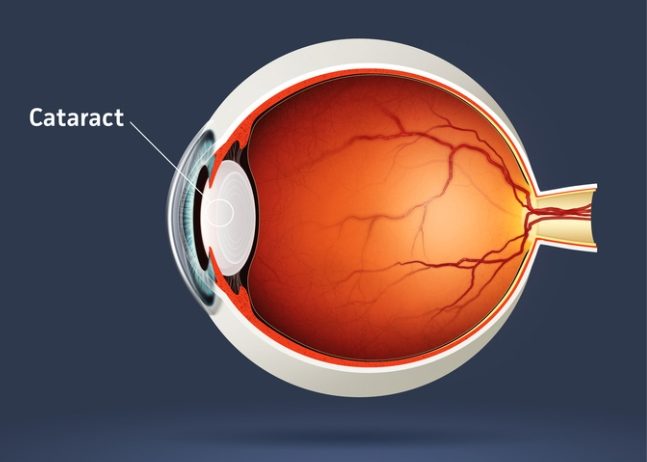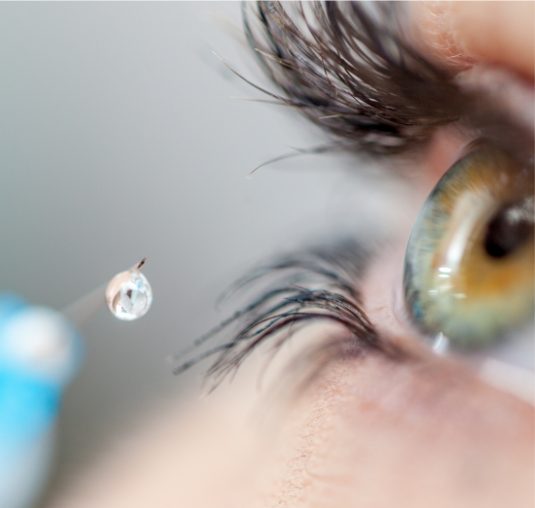 Windsor Clinic: 0800 644 0700 -
Reading Clinic: 0800 644 0900
tannereyes@sapphire-eyecare.co.uk
Windsor Clinic: 0800 644 0700 -
Reading Clinic: 0800 644 0900
tannereyes@sapphire-eyecare.co.uk
 Windsor Clinic: 0800 644 0700 -
Reading Clinic: 0800 644 0900
tannereyes@sapphire-eyecare.co.uk
Windsor Clinic: 0800 644 0700 -
Reading Clinic: 0800 644 0900
tannereyes@sapphire-eyecare.co.uk
A cataract is a clouding of the natural focusing lens in your eye. It is usually a part of the normal age related process and most people over the age of 70 have some signs of lens change. Light cannot pass through a cataract easily, so the retina only receives blurred and distorted images. The retina is then unable to send clear signals to the brain, and vision is gradually impaired. Other symptoms include excessive dazzle from car headlights or bright sunshine and the need to change glasses frequently. If cataracts are not removed all vision may be lost, but usually only in very advanced cases and the decision whether or not to have cataract surgery depends on how much your daily life is affected.
Fortunately, almost all cataracts can be successfully removed and vision restored through modern microsurgery techniques.
Modern cataract surgery begins with a very small incision. Mr Tanner has recently introduced a new technique allowing incision size to be decreased to less than 2 mm. These small incisions seal themselves immediately after surgery and heal over the following few weeks. No stitches are used, and normal daily activities can be resumed soon after surgery. Another advantage of no-stitch incisions is that they are less likely than other incisions to cause a focusing problem known as astigmatism. In fact, depending upon where the incision is made, no-stitch incisions can actually reduce astigmatism which exists naturally in some patients before surgery.
After the incision has been made, a small instrument is used to create a round opening in the lens capsule. Another instrument, called a phacoemulsification tip, is then inserted through this opening. Phacoemulsification uses high-speed ultrasound waves, vibrating 40,000 times per second, to break the cataract into tiny pieces which are then sucked out of the eye. Ultrasound is currently the most effective method for removing cataracts.
Once the cataract has been removed, a lens implant is placed in the lens capsule to replace the focus power of the natural lens.
Lens implants are very small ( 6-12mm) and are designed to fit permanently within the lens capsule, where they replace the focusing function provided by the natural lens. They are made of stable polymer plastics which will not be rejected by the eye. Lens implants come in different powers, as do glasses or contact lenses and are selected to improve the eye’s focusing ability. Many people discover that lens implants improve their vision and give them greater freedom from their glasses than they enjoyed before they developed cataracts.
Recent advances in lens technology now allow for the shape of the intraocular lens to be adjusted to the profile of the cornea, allowing increased contrast sensitivity and better visual acuity post-operatively. Specialist lenses also allow correction of astigmatism and multi-focal lenses allow the possibility of good reading and distance vision without the aid of spectacles post-operatively

Thanks to recent developments in anaesthesia, cataract surgery is a painless experience and the vast majority of operations are now done as a day case procedure. I commonly use two kinds of anaesthesia – topical anaesthesia and regional anaesthesia.
Topical anaesthesia is very popular with many people because no needles are required. Instead, topical anaesthesia simply uses drops which numb the eye. No eye patches are needed and patients usually notice improved vision immediately after surgery.
Regional anaesthesia involves gently injecting a local anaesthetic into the tissues around the eye. The eye is patched for a few hours and people begin to notice their improved vision by the next day.


Topical anaesthesia is now my preferred technique as it offers a quicker recovery with fewer side effects and is completely pain free. The eye is fully anaesthetised but otherwise you are awake during the procedure, which takes about 15 minutes. This means the operation can usually be done as a ‘day case’, which has many advantages such as shortening the time in hospital and reducing expense for the patient. Local anaesthesia also avoids the post-operative ‘hangover’ from a general anaesthetic, as well as avoiding the risks of an anaesthetic in patients with, for example, chest problems. The majority of my patients now have their operation done using only anaesthetic drops on the eye (topical anaesthesia), although of course, general anaesthesia is still available for patients who prefer to be completely asleep.
Many patients worry that they will see what is happening during the operation. Most patient notice a bright light and vague shapes but you cannot see the actual instruments. Furthermore, although you have to lie fairly still, there is no need to be rigidly immobile; you can adjust your position or even cough or sneeze, provided some warning is given. These days, age or infirmity is no longer a bar to successful cataract surgery.
In recent years there have been enormous advances in cataract surgery that make the operation safer and improve the visual outcome. However, you should be aware that there is a small risk of complications, either during or after the operation. Complications are usually treatable, possibly requiring further surgery. In a few cases serious problems such as infection or retinal detachement occur which may result in visual loss. Please ask for additional information sheet on potential complications if you wish to have further information.
Overall benefits of cataract surgery include:
Improved Colour Vision: Colours are brighter and more vivid.
Greater Clarity of Vision: Vision is crisper and sharper.
Improved Quality of Life: Studies have shown that people enjoy improved quality of life after successful cataract surgery. Many people can resume driving and activities such as reading, sewing, golf and using a computer are generally easier after cataract surgery.
Greater Freedom From Corrective Lenses: Because lens implants are selected to compensate for pre-existing focusing problems, most people find that their vision improves considerably after surgery. Ideally, people are able to see clearly without glasses after surgery, although glasses may be necessary for some activities such as reading or driving. Even people who still need to use glasses can usually use thinner lenses than they relied upon in the past. In patients with high levels of astigmatism I now routinely carry out additional incisions (LRI’s) to help change the shape of the eye, reducing astigmatism and decreasing reliance on spectacles.
Toric Lenses – Removal of Astigmatism: Newly developed Toric lenses allow the power of the lens to be different at different orientations within the eye. This allows correction of abnormal corneal curvature, known as astigmatism, and increases independence from spectacles post-operatively without the need for additional incisions on the cornea.
Multifocal lenses – These lenses are designed to reduce your requirement for glasses for intermediate or near work. They come in various styles and the technology is evolving continuously. All multifocal-style lenses work by splitting light energy into a near, intermediate or distance focus point. These lenses have the advantage of decreasing but not entirely eliminating your need for intermediate/computer or near/reading glasses. Many people are delighted with this option but it does have some drawbacks which Mr Tanner will be happy to discuss with you in more detail.
Toric-Multifocal Lenses – Decreased astigmatism and no reading glasses
A very recent development is the combination of both the Toric and Multifocal components of intraocular lens technology, allowing insertion of a lens which corrects for almost all refractive errors within the eye and minimises use of glasses for both near and distance, even in patients with high degrees of astigmatism. These lenses have now removed the need for additional incisions on the cornea for those patients who wish to have a multifocal lens inserted and are a great step forward.”
Disclaimer : The information provided in this website is intended as a useful aid to general practitioners, optometrists and patients. It is impossible to diagnose and treat patients adequately without a thorough eye examination by a qualified ophthalmologist, optometrist or your general practitioner. Hopefully the information will be of use prior to and following a consultation which it supplements and does not replace.


